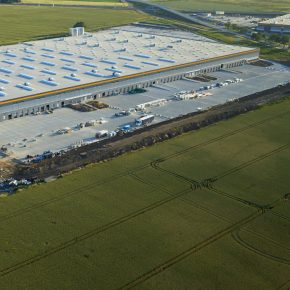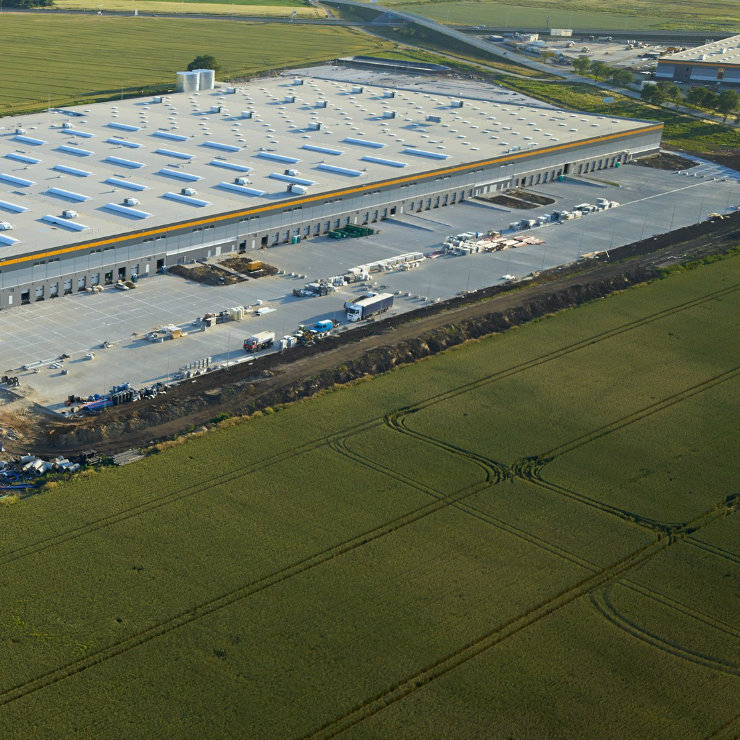Tydzień w gospodarce
Category: Raporty

Amazon warehouse in 2014, Wroclaw, Poland (Wrocław z Lotu Ptaka, Public domain)
“The Polish industrial market continues to be driven by strong take-up and a positive outlook for leasing volumes. Growing demand for warehouse space and specialist logistics services is being fueled by Poland’s booming economy, rising household consumption and the rapid expansion of e-commerce. In addition, with further improvements to its transport infrastructure Poland is emerging as the core logistics hub in the CSE region as it benefits from its strategic, central location in Europe, enabling efficient cross-border distribution operations. Despite the current challenges of rising development costs and the tight labor market, particularly in Poland’s core warehouse locations, the outlook for the coming months remains positive, underpinned by healthy supply and strong investor interest in the Polish market. We expect supply and take-up to set new highs in 2018,” said Joanna Sinkiewicz, Partner, Head of the Industrial and Logistics Agency, Cushman & Wakefield Poland, when presenting the latest report “Polish Industrial Market – Summary of H1 2018”.
“Our outlook for take-up volumes remains positive. Growing demand for warehouse space and specialist logistics services will be largely driven by the rapid growth in turnover recorded by e-commerce. This segment is expanding, which is evidenced by deals transacted by such retailers as Smyk at Central European Logistics Hub in Łódź (70,000 sqm, Panattoni) and H&M at SEGRO Logistics Park Poznań Gądki (30,000 sqm, SEGRO),” said report author Adrian Semaan, Consultant, Industrial and Logistics Agency, Cushman & Wakefield.
The biggest logistics markets are Warsaw and Warsaw Suburbs (a 27 per cent share of Poland’s total stock), Upper Silesia (18 per cent), Central Poland (14 per cent), Poznań (13 per cent) and Wrocław (11 per cent). The largest volumes of new warehouse space came onto the markets of Central Poland (259,000 sqm), Upper Silesia (131,000 sqm) and Warsaw Suburbs (114,000 sqm).
At the end of June 2018, there was approximately 2.25 million sqm of warehouse space under construction, reflecting a record-breaking development activity. Approximately 75 per cent of the development pipeline has already been secured with pre-lets, largely at BTS schemes which account for 40 per cent of warehouse space underway. Of all the regions, the largest volume of new supply is expected in Central Poland (628,000 sqm), followed by Upper Silesia (338,000 sqm), Wrocław (227,000 sqm) and Warsaw Suburbs (193,000 sqm). Robust developer activity is also being recorded on smaller regional markets such as Western Poland (183,000 sqm), which is seeing an increase in logistics developments in the vicinity of the S3 expressway.
Warehouse take-up hit a record high in H1’18 with 2.1 million sqm transacted, which represented an 18 per cent increase on the same period last year. Net take-up remains strong with new leases and extensions accounting for 76 per cent of the total leasing volume. The strongest leasing activity was recorded in Central Poland (a 19 per cent share of the leasing volume), Warsaw and Warsaw Suburbs (19 per cent), Upper Silesia (13 per cent), followed by Poznań (11 per cent) and Wrocław (11 per cent). Warehouse take-up came mostly from logistics operators (31 per cent), retailers (17 per cent), e-commerce (15 per cent) and light manufacturing (8 per cent).
The unwavering demand for warehouse space pushed Poland’s vacancy rate down to an all-time low of 4 per cent, equating to 573,000 sqm of vacant space at the end of H1’18, down by 0.7 p.p. and 1.4 p.p. compared to vacancy rates recorded three months and a year earlier, respectively. The highest vacancy rates were in Warsaw Inner City (10.4 per cent) and Krakow (8.4 per cent). Vacancy rates on other markets remained below 5.7 per cent.
After several years of stable rents, 2018 is seeing a strong increase in rental rates due to rising development costs. Although base rents hold firm, effective rents which are lower due to lease incentives have risen in some locations by approximately 5 per cent since year-end 2017. Poland continues to offer the lowest rents in Central and Eastern Europe. By comparison, prime Class A logistics rents in the Czech Republic and Hungary are 10 per cent and 15 per cent higher, respectively.

